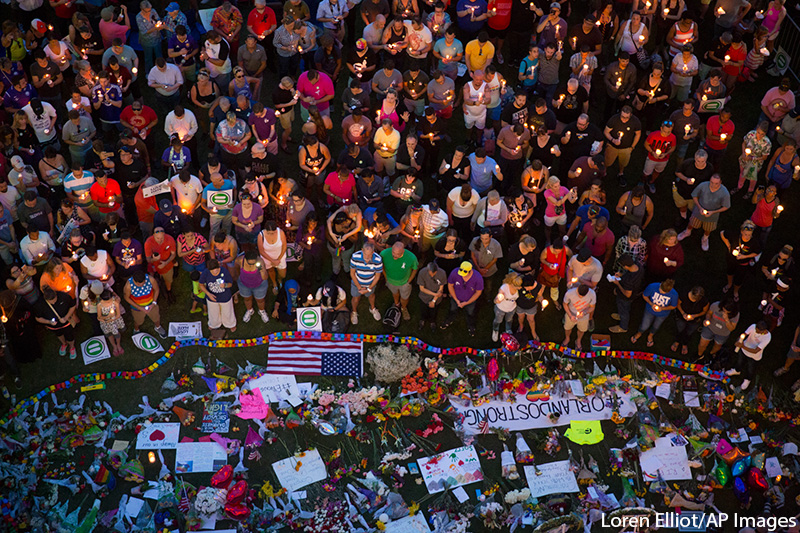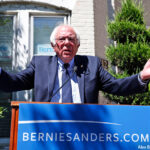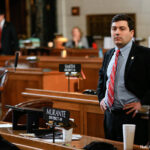- Current Events New Alabama Congressional District Selects Candidates
- Current Events Nebraska Rejects Winner-Take-All Proposal
- Citizenship Voting Under Age 18
- Citizenship Citizenship in Action
- Democratic Party Biden’s and Trump’s Recent Primary Results
- Elections Trump and Biden Win South Carolina and Michigan Primaries

Political Response to Orlando Tragedy
In the early morning hours of June 12 in Orlando Florida, a man armed with an assault rifle opened fire at a nightclub called Pulse. 49 people were killed and 53 more were injured. The world responded in a wave of grief and support. This week, we take a look at the way our country’s most prominent politicians have responded to this latest incident of gun violence and the actions they are taking in its wake.
The White House
President Obama and Vice President Biden traveled to Orlando to meet with the families of the victims, survivors of the attack, and the first responders to the scene. While there, the president made a televised address. In it, Obama talked about the incident as both an act of terror and a hate crime. He made it clear that while the evidence gathered to that point had indicated the killer had some connection to the Islamic State in Irq and Libya (ISIL), there was no indication that the attack was directed by the terrorist group itself, or was it was a part of some larger plot. President Obama also called for the need to “implement smarter policies to prevent mass shootings.”
U.S. Senate
Last week, btw brought you news of a filibuster by Senator Chris Murphy, with a look at the how filibusters are used as political tools. Here are the details as it relates to the Orlando shooting. On June 15, in the middle of a debate on an unrelated spending bill, Murphy, a Democrat from the state of Connecticut, said that he wished to force the Senate to act on specific gun control legislation. The senator (who represents the district that includes Newtown, where the Sandy Hook Elementary school shooting took place in 2012) sought a vote on legislation that would ban gun sales to those on terrorist watch lists and expand background checks. Murphy held the Senate floor for almost 15 hours, until the body agreed to hold a vote. The legislation ultimately failed 53-47.
U.S. House of Representatives
Unlike the Senate, where incidents like filibusters are rare but an allowed part of the legislative procedure, 60 members of the House of Representatives engaged in a sit-in on June 22, something unprecedented on the House Floor. (The rules of the House of Representatives do not allow maneuvers such as a filiguster)
Led by Georgia representative and Civil Rights activist John Lewis, the group of Democrats declared their intention to force the issue of gun safety legislation to a House vote. Republican Speaker of the House Paul Ryan declared the day’s legislative session officially concluded and turned off the video cameras , but the group of Democrats continued to speak, live-streaming their actions on their own phones and through social media. The session was later reconvened, but Speaker Ryan had difficulty restoring order. Protestors in support of the House members gathered outside. The sit-in ended the next day without a vote. Ryan called the event a “publicity stunt,” while others called it an “extraordinary measure.”
Always the keeper of the nation’s conscience at times of challenge and controversy. Thank you, John Lewis. https://t.co/D9CW2A3a2B
— Vice President Biden (@VP) June 22, 2016
Presidential Candidates
Republican nominee Donald Trump had two major responses. Trump highlighted the fact that the perpetrator was of the Muslim faith and reiterated his call for a ban on all Muslims entering the United States . Then he tweeted that he would meet with the NRA to discuss no-fly lists (which are created to identify and prevent suspected terrorists from boarding planes). Hillary Clinton’s response emphasized the need to unite and focus on the reinstatement of an assault weapons ban.


